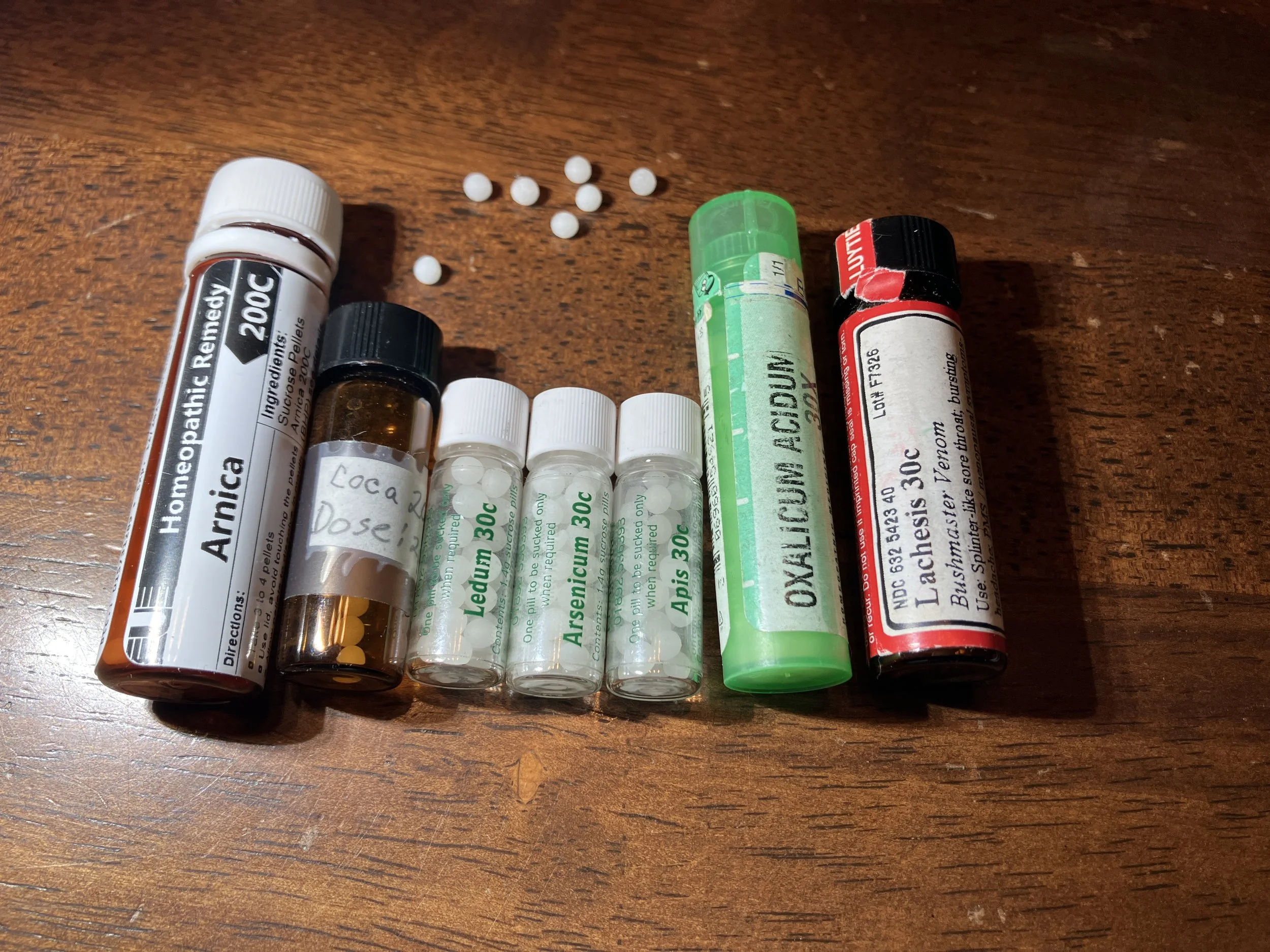What’s in your First Aid Kit? Homeopathy for the Wilderness
Disclaimer: I am not a certified medical professional. Contact your physician with any health related concerns.
My big vacation for the summer is a 60-mile backpacking trip with the Scouts! Next week, we are heading to New Mexico's renowned Philmont Scout Ranch to traverse mountains, engage in pioneering activities, cook over a fire, and tent camp under the night sky for 12 days.
We are a crew of 5 boys, 2 girls, and 4 adults, ready for adventure.
(Wish me luck!)
Photo: Uneva Pass. Practice backpack from Copper to Frisco June 28.
When spending time in the wilderness, it's important to be prepared for difficult situations. We are filling the First Aid kit with common materials like gauze and antiseptic, BandAids and anti-diarrheals.
From a holistic perspective, I always bring additional supplies that can support quick healing in scary situations. Specifically, I bring a handful of important homeopathic remedies.
A little history for you...
The founder of Homeopathy, Samuel Hahnemann chewed on the bark of a Quina/ Cinchona tree. He began to feel symptoms similar to malaria. Upon giving the bark to a person with malaria, he found that the patient quickly healed. The Quina/ Cinchona bark reminded the body how to heal itself from those symptoms.
From this experience, Homeopathy was born with the fundamental principle of "like treats like".
A homeopath takes substances from nature, puts them in water, and dilutes the solution until the original substance can no longer be detected. The water contains the energetic signature of the original substance.
When treating a patient, a homeopath identifies the substance from nature (plant, animal, mineral) that acts most similarly to the given symptoms. When the correct homeopathic remedy is selected (that's the difficult part!) , there can be an instant improvement.
These are the remedies I carry with me on the trail.
Arnica Montana, 200C: I use this to quickly heal muscle soreness and bruising. This works to reduce inflammation throughout the body. Back when I ran marathons and half-marathons, I would take Arnica after the race to reduce soreness. When my kids were born, I took Arnica after labor and delivery to reduce pain and heal quickly. It's my go-to alternative to Ibuprofen.
Coca, 200C: I use this remedy to reduce the symptoms of altitude sickness, including headaches, nausea, and difficulty breathing. If it isn't an option to descend to a lower elevation, Coca can buy you some time, increase comfort, and help you to acclimate. I take Coca every time I'm above 10,000 ft. It helps me to sleep at high elevation too.
Arsenicum Album, 30C: This is a great remedy for food poisoning, restlessness, anxiety, upset stomach, and diarrhea. When you are in the wilderness without purified water or refrigeration for food, this remedy can be essential.
Rhus Tox, 30C: This remedy is used to reduce the effects of poison ivy and poison oak, obsessive compulsive disorder, and arthritis pains. It works best for people who have more pain at the beginning of movement and the pain improves as the person continues to move.
Aconite Napellus, 30C: This remedy is useful when a sickness comes on after being cold. It is associated with a fear of dying., sudden onset of terror and panic, sudden high fever while feeling hot, severe thirst for cold drinks, feeling scared, and feeling restless.
Sometimes the unexpected happens on the trail, and you encounter snakes, spiders, scorpions, wasps, and other animals. There are few conventional protocols to deal with a bite or sting, other than anti-histamines and evacuation for an antidote. I always carry these 4 homeopathic remedies with me, knowing that they could turn around the symptoms or at least buy us some time.
Lachesis muta, 200C: This treats venomous bites by snakes or spiders. The affected part is a dusky purple color with continuous oozing of blood from the wound.
Ledum Palustre, 30C: This remedy is used for animal bites, stings from large insects (including wasps), and puncture wounds. The site of the wound is cold to the touch and swollen. The person feels better from cold applications.
Oxalicum Acidum, 30x: This remedy treats poisonous snake bites and insect bites when there is numbness, trembling, violent pains, and the wound is cold to the touch.
Apis Mellifica, 30C: I have used this remedy for bee and wasp stings and stinging pain. If there is significant swelling accompanied by heat and redness, try Apis to relieve symptoms.
Of course, there are many other remedies in a standard homeopathic travel kit, but these are the ones I bring into the mountains.
Each remedy is in pellet form, taken orally. A dosage is 3-5 pellets.
- Pour the pellets into the cap of the bottle, then directly into your mouth. Do not touch the pellet with your hands as the remedy will rub off on your fingers.
- Place the pellets under your tongue and let them dissolve. Do not swallow with water, as it will take longer for the remedy to enter your bloodstream.
If you find yourself in a challenging situation, please follow conventional guidelines, evacuation procedures, and medications. I am not a doctor; seek medical attention from a certified health care provider.
These homeopathic remedies are complementary to the standard protocols, and can help turn things around quickly.
Stay safe in the mountains. AND...be prepared with remedies that are supportive in an emergency.




